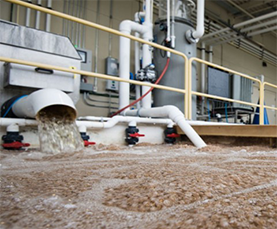Greywater is washwater. That is, all wastewater except toilet wastes and food wastes
derived from garbage grinders. There are
significant distinctions between greywater
and toilet wastewater (called «blackwater»).
These distinctions tell us how these wastewaters should be treated /managed and why,
in the interests of public health and environmental protection, they should not be mixed
together. Greywater contains far less nitrogen
than blackwater. Nine-tenths of the nitrogen
contained in combined wastewater derives
from toilet wastes (i.e., from the blackwater).
Nitrogen is one of the most serious and difficult-to-remove pollutants affecting our potential drinking water supply. Greywater contains far fewer pathogens than blackwater.
Medical and public health professionals view
feces as the most significant source of human
pathogens. Keeping toilet wastes out of the
wastewater stream dramatically reduces the
danger of spreading such organisms via water.
.
Greywater recycling offers consistent water availability to overcome drought and water restrictions. Architects can design sustainable buildings that drastically reduce water use by reusing water that would otherwise be destined for the sewer.
Greywater systems are a viable means of reducing the impact on our freshwater resources and therefore have become a popular option in Green Buildings. The same reduction in outgoing sewerage can be experienced when greywater is treated and recycled rather than going to the sewer. Engineers are seeking compact, all-in-one systems that allow recycling for irrigation or internal reuse in toilets and laundries.

